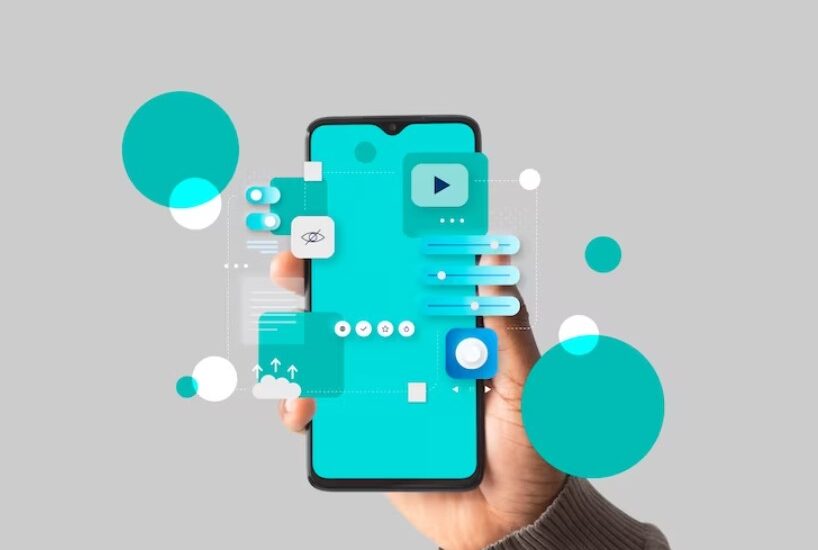An influencer marketing app is a digital platform designed to facilitate collaboration and communication between brands and influencers. It serves as a centralized hub where brands can discover, connect with, and manage relationships with influencers, while influencers can find brand partnerships, negotiate deals, and track their performance.
Development Process of Influencer Marketing Software
Developing an influencer marketing app can be a complex process, but here are some key steps and considerations to keep in mind:
- Define your app’s objectives: Determine the specific goals and purposes of your influencer marketing app. Are you building a platform for brands to connect with influencers, or are you targeting influencers themselves? Clarify the core features and functionalities you want to offer.
- Identify your target audience: Understand the needs and preferences of your target users. This will help you tailor your app’s features, design, and user experience to meet their expectations.
- Plan the features: Based on your app’s objectives, create a list of features you want to incorporate. Common features in an influencer marketing app may include user profiles, search and discovery capabilities, messaging and collaboration tools, content creation and sharing functionalities, analytics and performance tracking, payment processing, and review and rating systems.
- Design the user interface (UI) and user experience (UX): Create intuitive and visually appealing designs that make it easy for users to navigate and engage with your app. Consider the branding, aesthetics, and overall flow of the user experience.
- Choose the right technology stack: Select the appropriate technologies, programming languages, frameworks, and databases for your app’s development. Consider factors such as scalability, security, and performance requirements.
- Develop the app: Hire experienced influencer marketing app developers or an app development team to bring your app to life. They will handle the coding, integration of features, and testing to ensure your app functions smoothly.
- Implement APIs and integrations: If you plan to connect with social media platforms or other third-party services, you’ll need to integrate their APIs into your app. This allows users to access their social media accounts, retrieve data, and facilitate interactions with influencers.
- Test and iterate: Thoroughly test your app to identify and fix any bugs or issues. Gather feedback from beta testers and make necessary improvements to enhance the user experience and app performance.
- Launch and promote your app: Prepare a comprehensive launch plan to generate awareness and attract users. Utilize digital marketing strategies, social media campaigns, influencer partnerships, and other promotional tactics to reach your target audience.
- Maintain and update your app: Continuously monitor user feedback and analytics to identify areas for improvement. Regularly release updates to address bugs, introduce new features, and adapt to changing user needs.
Remember, building a successful influencer marketing app requires a deep understanding of the industry, effective user engagement, and strong partnerships with influencers and brands.
Key Features of Influencer Marketing App
The key features typically found in an influencer marketing app include:
- User Profiles: Both brands and influencers have dedicated profiles that showcase their information, demographics, audience insights, and previous collaborations.
- Search and Discovery: Brands can search and discover influencers based on specific criteria such as niche, audience size, engagement rate, location, and content type. Influencers can explore and apply for brand campaigns that match their interests and preferences.
- Messaging and Collaboration: The app provides a secure messaging system that enables direct communication between brands and influencers. They can discuss campaign details, negotiate terms, share creative assets, and coordinate content creation.
- Campaign Management: Brands can create and manage influencer marketing campaigns within the app. This includes setting campaign goals, defining deliverables, establishing timelines, and tracking the progress and performance of each collaboration.
- Content Creation and Approval: Influencers can create and submit content drafts for brand approval. The app may offer features for brands to review, provide feedback, and request revisions before final content submission.
- Performance Analytics: Brands and influencers can access real-time analytics and performance metrics to measure the success of their campaigns. This includes tracking reach, engagement, conversions, and ROI.
- Payment and Contract Management: The app may include functionalities for brands to manage payments, issue invoices, and track financial transactions with influencers. It may also facilitate contract generation, e-signatures, and legal agreements between parties.
- Review and Rating System: Both brands and influencers can provide feedback and ratings about their collaboration experiences. This helps establish credibility, trust, and transparency within the influencer marketing community.
- Integration with Social Media Platforms: The app may integrate with various social media platforms such as Instagram, YouTube, TikTok, and others. This allows seamless data retrieval, post-scheduling, and cross-platform content sharing.
- Notifications and Updates: Users receive notifications about new collaboration opportunities, messages, campaign updates, and other relevant activities within the app.
The specific features and functionalities of an influencer marketing app can vary based on its target audience, niche, and business model. However, the overall goal is to streamline the influencer marketing process, foster successful collaborations, and provide a user-friendly experience for brands and influencers to connect and thrive in the digital marketing landscape.
Conclusion:
Developing an influencer marketing app can be a rewarding endeavor if executed strategically and thoughtfully. By following the steps outlined above, you can create an app that facilitates seamless collaboration between brands and influencers, enhances user experiences, and drives impactful influencer marketing campaigns.
Remember to define your app’s objectives, understand your target audience, plan and implement the right features, design a user-friendly interface, choose the appropriate technology stack, and thoroughly test and iterate your app before launching it.
Continuously maintaining and updating your app based on user feedback and industry trends will ensure its long-term success. With a well-designed influencer marketing app, you can tap into the power of influencer marketing and provide a valuable platform for brands and influencers to connect, engage, and create impactful collaborations.
